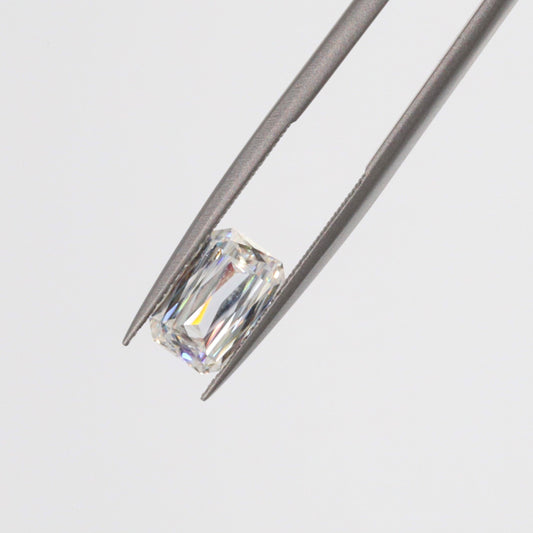Deciding on the right gemstone for an engagement ring, one that’s meant to last forever, is a very important choice. Diamonds are becoming increasingly problematic due to their exorbitant cost as well as environmental and ethical considerations. Common alternatives include white sapphire or moissanite for more affordable and guilt-free jewelry. There are several things to consider when deciding between white sapphire vs. moissanite. Here are some of the basics to help you understand the differences and make the right choice.
White Sapphire vs. Diamond vs. Moissanite: What Are They?
What is White Sapphire?
Many people may think of that deep blue hue when sapphire is mentioned, but white sapphire is a natural gemstone that has a diamond-like appearance. It’s colorless because it doesn't contain the trace minerals found in blue sapphires or rubies.
When comparing white sapphire vs. diamond, white sapphires don't sparkle in the same way diamonds do. They give off a more silvery shine as opposed to the traditional rainbow-faceted reflection. Additionally, in terms of sapphire vs. diamond, white sapphire tends to show dirt more easily and as a result needs more frequent cleaning.
What is Moissanite?
Moissanite, sometimes also referred to as white moissanite, differs from white sapphire because it’s not naturally occurring but is produced in a lab. That makes it a wonderful choice for several reasons, not the least of which is that it’s environmentally sustainable and ethically sourced in comparison to diamonds. Moissanite is nearly indistinguishable from diamonds on almost all levels, especially when it comes to hardness and sparkle.
Don't get confused when distinguishing between white sapphire vs. moissanite. Many people think there’s a gemstone called white sapphire moissanite. This isn’t true, they are two distinct stones with different qualities and properties. White sapphire is naturally occurring, unless you’re looking at lab-created white sapphire vs. moissanite, which would be comparing two gemstones made in labs. Let's have a look at the differences.
White Sapphire vs. Moissanite: How Are They Different?
When comparing moissanite vs. sapphire, both are more affordable than diamonds and therefore more accessible for important purchases such as engagement rings. However, they each have their own unique qualities when compared to one another.
Hardness
The hardness of a gemstone is particularly important in jewelry such as engagement rings, because it indicates how well it can withstand daily wear. So in terms of hardness, in the contest of white sapphire vs. moissanite, moissanite wins for being more resistant.
In the scale used to measure hardness, known as the Mohs scale, diamonds top out at 10. White Sapphire hardness is at a 9 on the Moh's scale, which puts it in the top 3 for hard gems. Typically, sapphires aren't as durable as diamonds but it's an option for anyone looking for a natural stone.
Moissanites are a close second to diamond, coming in at between 9.5 and 9.25.
Appearance
Despite the fact that they’re both white gemstones, white sapphire and moissanite do not have the same appearance once they’re cut and set in jewelry. The biggest difference in appearance is the way they reflect light.
Moissanite far outshines white sapphire when it comes to flash and brilliance, and in fact could easily be mistaken for a diamond on this quality alone. White sapphire has a more muted reflection with a silvery tone.
This quality is measured in what’s called the "refractive index" or RI, which rates the gemstone's "potential for brilliance." Diamonds rate 2.42, while white sapphire ranks below that at 1.77 and moissanite comes out ahead of both at 2.65 to 2.69, making it the world's most brilliant gemstone.
Price
In terms of white sapphire vs. moissanite price ranges, both cost less than a diamond. Moissanite generally has a slightly higher price point because it comes with more of the benefits that people generally look for in an engagement ring or other jewelry traditionally made with diamonds.
The price of white sapphire, being that it’s a natural gemstone, varies depending on its size, rarity, and quality. It will always run for less than a diamond, but could rival moissanite if it’s a rare find or very large. However, large white sapphires aren't recommended as a diamond alternative because their differences in appearance are more evident the bigger they get.
Meanwhile, because moissanite is produced in a lab in controlled conditions, you won't encounter the unpredictable fluctuations in price that are found in natural gemstones. This gives moissanite a stable and reliable price point with consistent quality.




